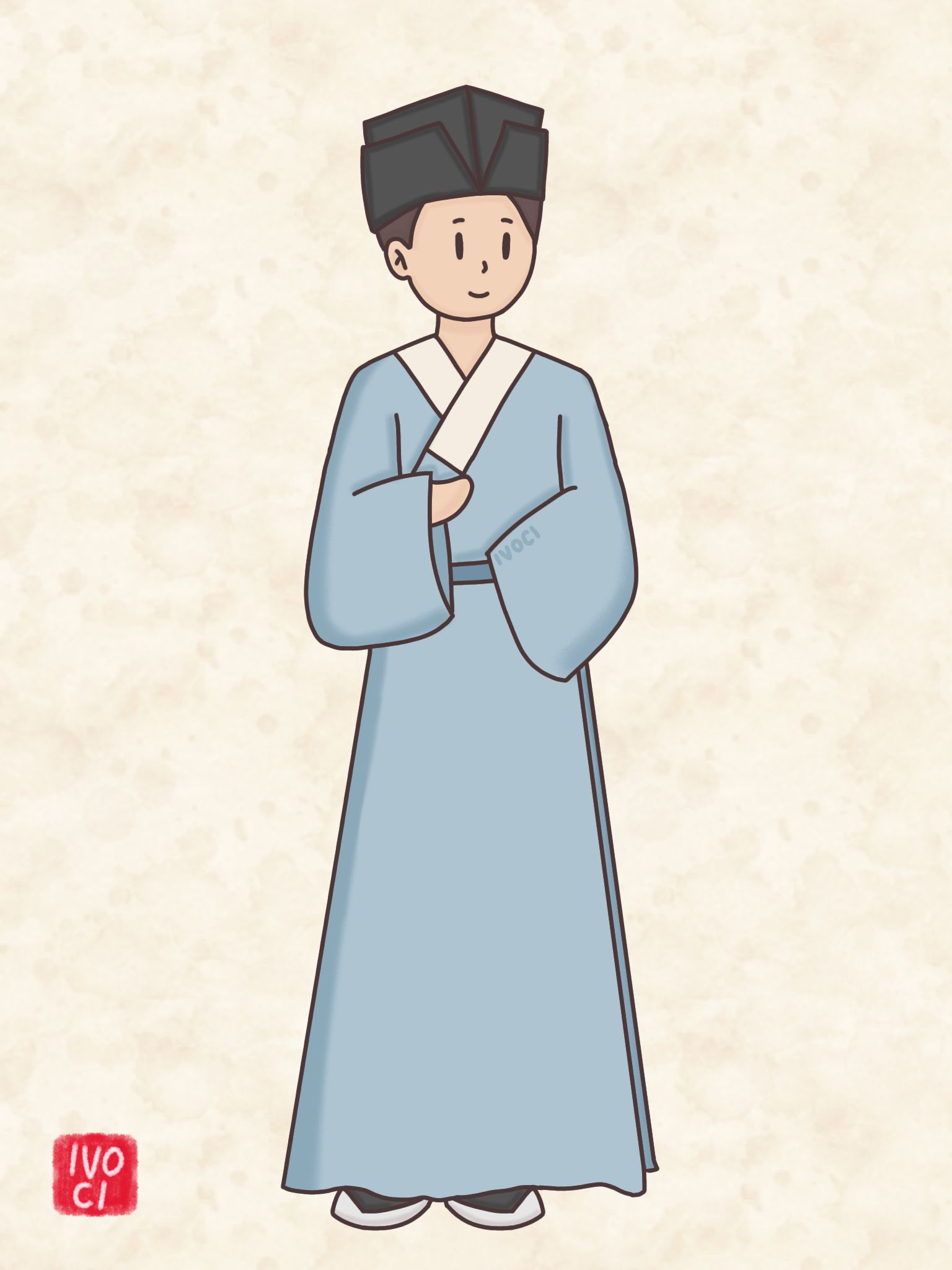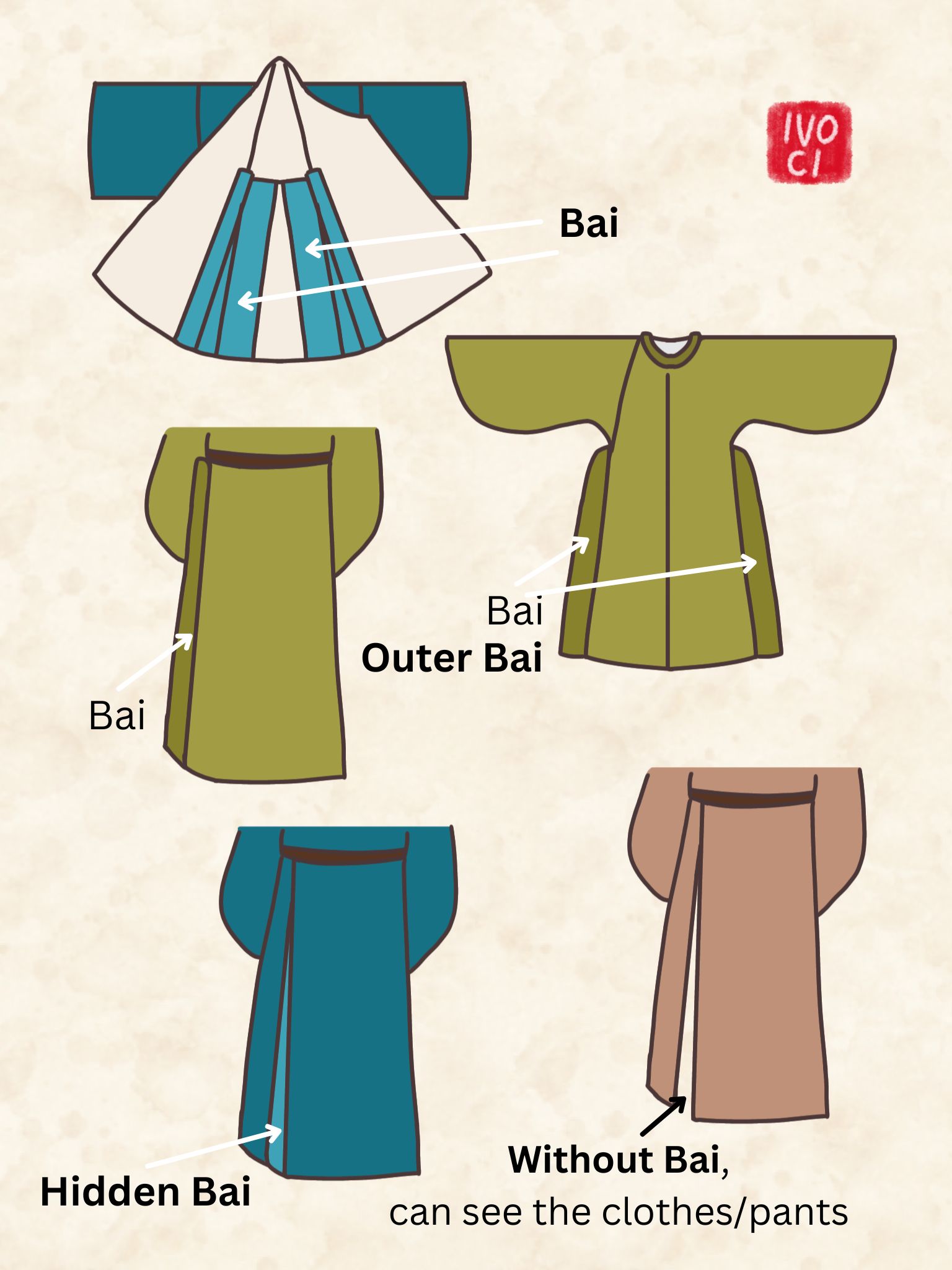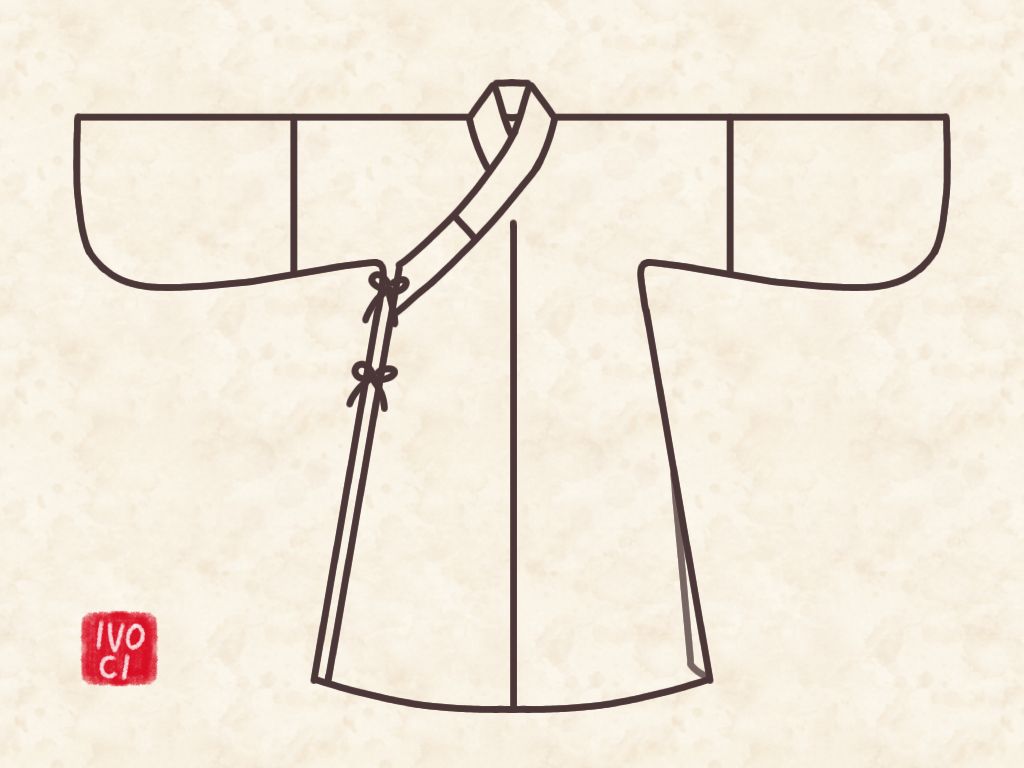Zhiduo (Chinese: 直裰 ; pinyin: zhí duō, also called 直掇 zhí duō) originated from the Tang dynasty, and the clothes commonly worn since the Song dynasty.
In ancient times, the zhiduo was worn by men, mostly monks, and writers.
The Song dynasty zhiduo is generally not slit.
In the Ming dynasty, the zhiduo had become very popular among literati and scholars, and the basic features of the Ming dynasty zhiduo were cross-collars, knee-length clothing, slits on both sides without Bai (摆 bǎi), generally with a collar guard on the collar, and mostly with pipe sleeves.
Zhiduo didn’t have Bai, so we could see the inner shirt or pants.
Main features of zhiduo:
1. The collar is jiaoling youren
2. Can be sewn Huling (Chinese: 护领 ; pinyin: hù lǐng) on the collar
Sewn-in the collar area, mostly white and varying in width, to protect the collar from wear and stains.
In ancient times, huling could be disassembled and replaced frequently.
Much of the huling in contemporary hanfu is retained as traditional features.
3. How to make zhiduo: Tongcai (Chinese: 通裁 ; pinyin: tōng cái)
Whole cut, with no seams on top and bottom
4. Usually narrow arms, but there are also those with straight arms or pipes
5. The length is knee-length, and the garment length and sleeve width vary according to the needs of the wearer
6. The body of the garment is cut from the waist down, with no inside hem
Inner hem: Folded with extra fabric on both sides of the slit, which can cover the inner layer of the garment to maintain a sense of dignity and also support the structure of the robe, making it more upright and stable
The term zhiduo appeared in the Song dynasty but does not refer to the same garment at different times.
During the Song dynasty, the zhiduo, also known as zhishen, with large sleeves, without gaps, and black trim around the hem, was worn by monks and writers.
In the middle of the Ming dynasty, a zhiduo phenomenon called the Taoist robe in an informal setting was documented, indicating a trend of changing clothing.
When wearing a zhiduo, you can wear it with a belt, a skirt/pants as underwear, a small hat, and shoes/boots.




Leave a Reply